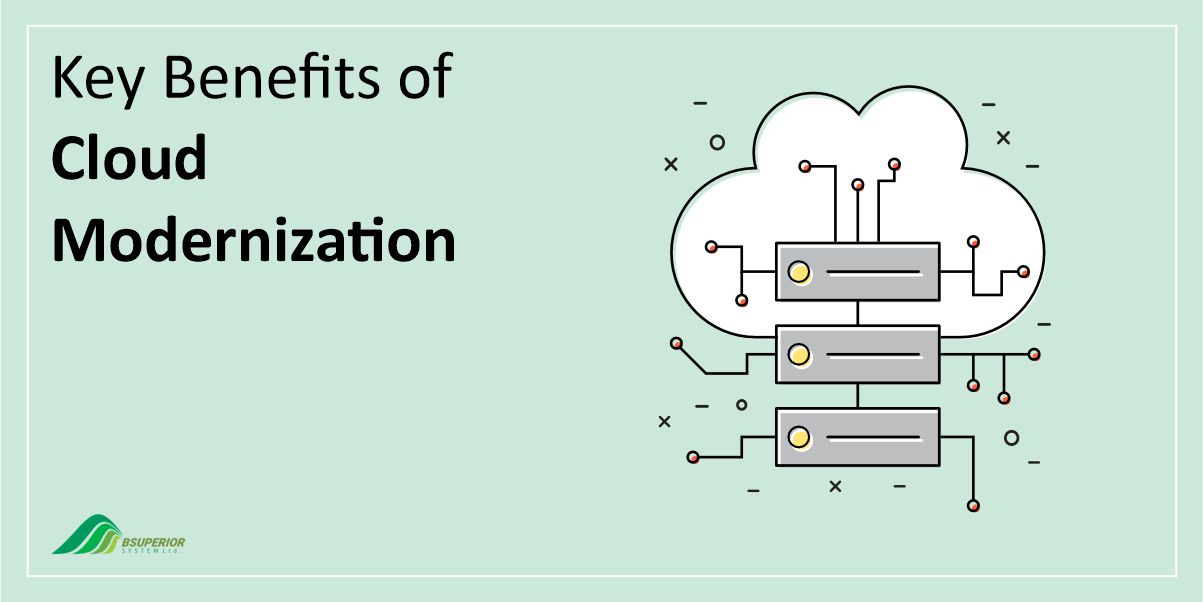Staff Augmentation vs. Managed Services: How Are They Different?

Table Of Content
Staff augmentation and managed services are two options for businesses looking to expand their workforce or expertise without going through the traditional hiring process.
Making the right outsourcing decision can be crucial for your business strategy. With that being said, in this blog post, we’ll explore these two models and show you how they can streamline your operations. We’ll also introduce an alternative option to consider.
By the end, you’ll be equipped to choose the outsourcing approach that perfectly aligns with your business strategy and organizational needs. You’ll understand the pros and cons of each model, and when to use them for maximum impact.
What is Staff Augmentation?
Staff Augmentation is a flexible way to find the specific skills your current team lacks. It involves bringing in short-term specialists to tackle a project or add expertise that you don’t have in-house.
This is especially helpful for temporary projects or when you need extra expertise without hiring full-time staff.
Staff augmentation is all about being adaptable. It lets companies react quickly to market shifts and project needs by finding talent exactly when they need it.
This approach is perfect for businesses that want to stay in control of their projects and internal workings while also tapping into a worldwide pool of specialized talent.
Read More: IT Staffing: All You Need to Know [Benefits]
Staff Augmentation: Pros and Cons
Advantages of Staff Augmentation
Staff augmentation helps you access top talent and keeps costs in check. But the benefits go even further. Let’s dive into some additional advantages of this approach.
1. Get the Best for Less
Staff augmentation helps you hire top talent for temporary gigs, giving you the skills you need to succeed without the long-term commitment of full-time employees. This is quite essential for projects that require specialized expertise or face unique challenges.
The right experts can make all the difference and ensure that you have the skills to overcome hurdles and hit deadlines.
2. Scale Your Team Up or Down on Demand
Development teams don’t always have a steady workload. Staff augmentation services are your secret weapon for scaling your team size to match your current needs.
Need extra muscle for a big project? Bring in some temporary staff. Project winding down? No problem, just adjust your team size accordingly.
3. Save Time and Money on Hiring
Hiring full-time employees is a time-consuming and expensive process. Staff augmentation cuts through the hassle. You avoid the costs of searching, interviewing, and onboarding new hires, along with the ongoing expenses of salaries and benefits.
4. Boost Productivity and Get Fresh Eyes
Staff augmentation brings in fresh perspectives and focused talent. These temporary team members are laser-focused on your project, collaborating closely and paying attention to detail.
They can even provide a healthy dose of competition that will encourage your existing staff to perform at their best.
5. Less Management Hassle
Staff augmentation goes beyond just cost-effectiveness and access to talent. It also frees you from the headaches of managing a larger team directly.
You get to call the shots and stay in control, but you avoid the burden of everyday HR tasks and employee issues. To put it in simple words, you will have a team extension without the management baggage.
Disadvantages of Staff Augmentation
Staff augmentation offers a tempting solution for accessing talent and scaling your team. However, it’s not without its drawbacks. Below we’ll explore some of the potential downsides to consider before you decide if staff augmentation is the right fit for your needs.
1. Training and Management Overhead
Integrating new team members, even temporary ones, requires training and management effort. Team leaders need to invest time in onboarding them to project goals and workflows. Existing staff may also need to dedicate time to answering questions and providing guidance.
2. Long-Term Cost
Staff augmentation shines for short-term needs. However, if you rely heavily on augmented staff for extended periods, the costs can add up.
You’ll likely pay service fees, platform fees, or potentially buy-out fees to retain staff. In the long run, full-time employees may be a more cost-effective option.
3. Over-Reliance on External Expertise
While access to external talent is a benefit, heavy dependence on augmented staff can hinder the development of in-house expertise. This may affect your company’s long-term ability to manage similar projects without relying on external resources.
4. Security and Confidentiality Concerns
Sharing sensitive information with external resources requires careful consideration of data security and confidentiality risks. Integrating augmented staff requires additional measures to ensure information protection.
5. Potential for Cultural Differences
Augmented staff may have diverse backgrounds leading to cultural differences that could impact teamwork, communication, and overall productivity. Effective management is crucial to bridge these gaps and ensure successful collaboration.
Read More: To 10 Advantages of Custom Software Development
Staff Augmentation Model: When it Works Best
Staff augmentation shines in specific situations where you need a strategic boost to your existing team. Here’s when it can be most effective:
- Strengthening Your Team: Have a strong core team but need additional expertise for a new project? Staff augmentation lets you quickly add skilled specialists to your existing team.
- Filling Skill Gaps: Is your team almost there but lacking a few key skills to complete a project? Staff augmentation lets you strategically add complementary expertise to your existing resources.
- Tight Deadlines: Hiring through traditional channels can be slow. Staff augmentation provides a faster solution by giving you immediate access to extra developers, regardless of contract type.
- Maintaining Control: If you value control over project execution, staff augmentation lets you integrate external talent seamlessly into your internal team. You provide direct oversight and manage them as part of your existing workforce.
What is Managed Services?
Managed Services, on the other hand, involves handing over specific business tasks or functions to a specialist company. In this approach, you hire a whole team of experts, but without the hassle of recruiting and managing them yourself.
Managed services providers oversee the program you outsource to them, and make sure that everything works as planned and meets the agreed-upon standards.
This approach is ideal for businesses that want to streamline their operations and focus on their core strengths. By outsourcing functions such as IT, HR, or customer service, companies can take advantage of the expertise of managed service providers and free up their own internal teams.
Managed Services: Pros and Cons
Advantages of Managed Services
Managed services offer a compelling value proposition beyond just cost savings. Here are the main advantages of this approach.
1. Cost Efficiency
Managed services are a budget-friendly way to access a team of qualified professionals. You pay for the expertise and resources you need, without the overhead of hiring and managing full-time employees. This model ensures you’re never burdened by unnecessary costs.
2. Expanded Skillset and Expertise
Managed services providers offer a vast pool of talent. This allows you to access specialized skills that you might not have in-house. For example, a company developing office software can partner with a managed service provider to create mobile apps without hiring dedicated app developers.
3. Long-Term Support
Managed services free you to focus on your core business activities. By outsourcing ongoing maintenance and support of specific functions to a dedicated provider, you ensure your systems are kept up-to-date and secure.
This frees up your internal resources from routine tasks and allows them to tackle more strategic initiatives. Companies with limited internal resources or requiring specialized expertise benefit greatly from this long-term support structure.
4. No Training
Managed services eliminate the need for internal training and onboarding. Your provider takes care of everything, from assigning a dedicated project manager to building a skilled operational team.
This frees up your valuable time and resources, allowing you to focus on your core business while they handle the technical expertise.
5. Guaranteed Results
Managed services are built on a foundation of trust – the Service Level Agreement (SLA). This contract outlines the exact scope, duration, and performance expectations for your project.
Since compensation hinges on meeting these SLAs, managed service providers are highly motivated to deliver the promised results and ensure the overall value of their services.
Disadvantages of Managed Services
Despite the advantages, the managed services model comes with potential drawbacks.
1. Mismatched Needs, Increased Complexity
Defining unclear or unnecessary services can lead to complications. Outsourcing short-term tasks might be more trouble than it’s worth compared to hiring temporary staff. Carefully identify your needs to ensure managed services streamline your operations, not add complexity.
2. Balancing Control and Security
Managed service providers need some level of autonomy to make crucial decisions. However, this means granting them access to sensitive information.
That’s why, choosing a reliable and trustworthy managed service provider is critical to ensure both efficient service delivery and data security.
3. Potential for Hidden Costs
Managed services providers usually offer bundled packages that might include unnecessary tools. In some cases, hiring temporary staff may be more cost-effective since you’re not paying for a full team and management structure you might not need.
4. Unsuitable Processes and Knowledge Loss
Processes requiring a deep understanding of your organization’s unique operations might not be well-suited for managed services. Outsourcing these critical functions can lead to knowledge loss and make you overly reliant on the provider.
As a result, you need to carefully evaluate which processes are appropriate for outsourcing to avoid getting locked into a service that doesn’t deliver the desired results.
Read More: Hospitality vs. Customer Service: Explaining the Difference
Managed Services Model: When it Works Best
Managed services aren’t a one-size-fits-all solution, but they excel in specific situations such as:
- Long-Term Stability: Need consistent, reliable operations for ongoing tasks or long-term projects? Managed services provide a dependable partner to keep things running smoothly.
- Deep Expertise: Does your project require a wide range of specialized skills? Managed service providers offer a comprehensive team with diverse capabilities to tackle complex tasks.
- Streamlined Operations: Want to reduce the overhead of managing specific functions? Managed services can be a cost-effective way to free up your internal resources.
- Focus on Growth: As your company scales, security, and network needs become more intricate. Managed service providers offer efficient solutions for both networking and security, allowing you to focus on future growth.
Staff Augmentation vs. Managed Services: How Are They Different?
In what follows, we break down the main differences between staff augmentation and managed services models to help you pick the right fit.
1. Costs
- Staff Augmentation: Cost-effective for short-term needs. You only pay for the time the outsourced staff works, making it ideal for short projects or filling temporary skill gaps.
- Managed Services: Investment for long-term gain. Managed services require a fixed fee, but this can save costs in the long run by streamlining operations, improving security, and offering ongoing support and maintenance.
2. Control
- Staff Augmentation: You have the full control. You directly manage the augmented staff as part of your internal team and maintain full control over the project.
- Managed Services: Hand over the reins a bit. The managed services provider takes the lead on managing the project or function, freeing you to focus on core business activities.
3. Nature of Work and Expertise
- Staff Augmentation: Targeted expertise for specific needs. Need to fill a specific skill gap or add expertise for a particular project? Staff augmentation brings in the right talent to get the job done.
- Managed Services: Outsource entire functions. Managed services handle entire processes and provide a comprehensive team and established methodologies.
4. Flexibility and Scalability
- Staff Augmentation: More adaptable. Need to quickly adjust your team size or skillset? Staff augmentation lets you scale up or down on demand, making it ideal for fluctuating workloads or unique challenges.
- Managed Services: More comprehensive, but less flexible. Managed service providers handle the entire picture. While they can adapt to your needs, they generally don’t offer the same level of on-the-fly scaling as staff augmentation.
Beyond Staff Augmentation and Managed Services
While staff augmentation and managed services offer valuable solutions, BSUPERIOR provides another option which is software development outsourcing.
This is a full-cycle service where you provide the project specifications and we handle the entire development process and deliver a complete software solution.
This service is ideal for companies in several situations:
- No Internal Development Team: If you lack an in-house development team, BSUPERIOR’s software outsourcing takes care of the entire software development process.
- Skill Gap in Existing Team: Perhaps your internal team lacks specific expertise for a project. Our software outsourcing lets you access a wider pool of talent to fill those skill gaps.
- Team Capacity Reached: Is your internal development team already overloaded? Our software outsourcing provides an extra hand to tackle additional projects without straining your existing resources.
Similar to staff augmentation and managed services, software outsourcing uses an external team to accomplish your goals. This offers access to world-class talent and frees you from the burden of hiring and managing your own software development team.
Final Words: Choosing the Right Approach
Staff augmentation and managed services offer distinct approaches to outsourcing. Both options address business challenges, but the optimal choice hinges on factors like project length, control requirements, and unique business goals.
Analyzing these factors alongside the advantages and disadvantages of each model enables organizations to make informed decisions.
Staff augmentation and managed services approaches free you from the burden of recruiting specialized talents.
However, managed services offer less flexibility and require relinquishing some control. This is why many businesses favor staff augmentation, which allows for closer integration with existing teams.
The bottom line is that you should carefully consider your project requirements and desired level of control to determine whether the tailored expertise of staff augmentation or the comprehensive solution of managed services best aligns with your business goals.
Last but not least, you’re not limited to just these two options. Companies can employ both staff augmentation and managed services strategically to achieve different goals.
What’s more, a third option, as we talked about above exists – software outsourcing – where you completely offload software development to an external team.
We value your input and believe this content may enhance our services. However, it's under review. If you see room for improvement, please use the "Report an issue" button below. Your feedback helps us excel.
Contact us today at –– and speak with our specialist.




